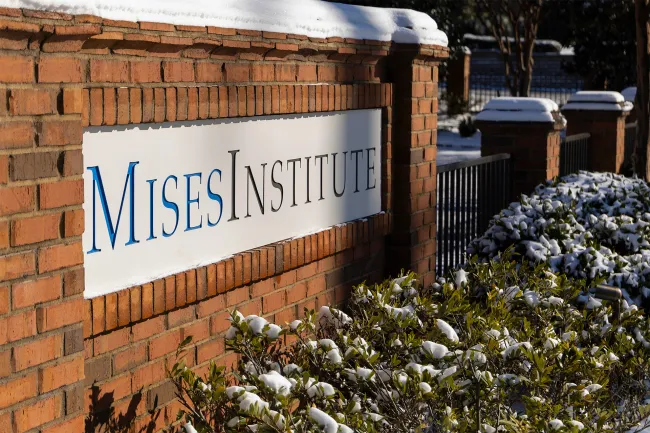An early mentor once warned me, “If the public knew the truth, the markets would be cut in half.” Decades later the stock market has soared tenfold, but so has the deceit.
We have a new administration coming in with a central promise of “truth.” Trump has placed what some call “radicals” in charge of key agencies and departments. The good news: this bold strategy may be the only way to cut through the noise to find the truth. The challenge: the truth sometimes hurts.
This is a risk piece and not a political one. We see several potential landmines on the journey toward truth. Our new set of radicals will face countless rabbit holes to explore—like why our life expectancy lags a full five years behind most developed nations, or the reflexive stamp of “classified” on supposedly benign files that keep us in the dark, even though the politicians supposedly work for us.
Much of this truth won’t be pretty, and each carries a unique set of risks. We’ll keep our focus on the markets and highlight a few potential time bombs that may prove my mentor right.
Treasury Re-Hypothecation—The Dangerous Deception of “Risk-Free” Assets
US Government Treasury Bonds (sovereign bonds) are often referred to as “pristine collateral.” For over 30 years, cash and sovereign bonds were the only Tier 1 assets under Basel rules (with gold joining the ranks in 2023). In other words, Treasury securities are “as good as gold.”
Any financial institution holding Treasury securities can pledge them as collateral and receive 100 percent credit against their loan. Other assets require a “haircut”: if a bank pledges a different asset, they must post additional collateral. For example, an institution with $1 million in stocks can only secure an $800k loan, as stocks require a 20 percent haircut (roughly and depending on certain conditions) due to their higher risk and volatility. Treasuries are regarded as pristine collateral on the global stage, but it would be troubling to discover that these securities are being re-hypothecated.
Re-hypothecation occurs when a bank or financial institution uses collateral pledged by a client—such as Treasuries—for its own borrowing or trades, effectively reusing the same asset multiple times. Finding out our pristine collateral was being abused would be a seismic revelation. The idea of multiple parties claiming ownership of the same asset could spark a panic, with institutions scrambling to secure their collateral, only to discover that there isn’t enough to go around.
The rules continue to change to support the ownership of treasuries. We discussed this topic in “Treasury Debt – Pristine Collateral or a Red Flag?” In this piece we focused on the recent rule change that allowed banks to no longer mark their bonds to market prices—another convenient handout to avoid banks taking major losses on their Treasury holdings. There is surprisingly little transparency in these markets, leaving us to draw our own conclusions.
The perception of US Treasuries as risk-free, pristine collateral underpins the entire global financial system. If their re-hypothecation were exposed—revealing multiple claims on the same asset—it could shatter confidence and disrupt liquidity across markets.
Unmasking the Paper vs. Physical Deception in Precious Metals
Of course, we must address the ongoing paper vs. physical shenanigans. We’ve covered this topic extensively, including our eBook, A Silver Heist. A Silver Heist hypothesizes a scenario where manipulation and fraud in the precious metals market allow Goliath to seize control of physical silver, while paper silver futures settle in cash. We’ve already seen paper markets break down: in 2020, the oil market broke to the downside and oil futures plummeted to negative $30, and in 2022, nickel futures snapped to the upside and gained 250 percent in just two days, with exchanges stepping in to cancel trades—proving how far we have drifted from free and fair markets. The lack of transparency in the silver market, frequent and blatant paper smashes, and the extreme paper-to-physical leverage all signal that A Silver Heist is not just possible but increasingly likely.
We are surprised the game has gone on as long as it has. Any exposure to the massive leverage and manipulation in the paper market for gold and silver could ignite chaos.
The Elephant in the Room—The Quadrillions of Derivatives and Their Hidden Risk
Derivatives are all about leverage. For example, if a pension fund buys $100 million of S&P 500 stocks, it pays $100 million, or $50 million if using Reg-T margin. If the same fund buys S&P futures, they pay just $15 million. Alternatively, a three-month call option to control $100 million in long stock costs only $3 million (roughly).
With the derivatives market exceeding a quadrillion dollars, that’s an enormous amount of leverage, borrowing, and debt. The consistent lack of transparency means we’re left to guess the total size of this pile, and frankly, nobody knows.
What we do know is that this represents a significant systemic risk. The markets are filled with guesswork, and our assumption is that any light shed on this out-sized pile of paper would be met with concern. With the recent rapid move higher in rates, this mountain of debt has become much more fragile.
Exchange-Traded Funds—A Growing Risk in Plain Sight
What an incredible invention, making life easier for everyone. Advisors and individuals can invest in ETFs: set it, and forget it. With advantages like liquidity, lower fees, and better diversification, ETFs are a game-changer, but we mustn’t overlook the risks.
In 1996, there were only a handful of ETFs compared to over 8,000 publicly-listed companies. Today there are more than 3,000 ETFs, while the number of stocks has nearly halved. Here are some key risk concepts associated with ETFs:
- Many individual stocks are represented in multiple ETFs, creating overlapping exposure
- There are inverse ETFs (where one can buy the ETF and receive returns as if shorting the ETF) and leveraged ETFs (offering 2x or 3x the returns of the underlying ETF)—a true casino, with something for everyone.
- Some ETFs are highly liquid, while their underlying components may not be. Small cap stocks and bond ETFs—like IWM and HYG—are prime examples of this mismatch.
- Susanne Trimbath has conducted extensive research showing that most stocks have “phantom shares,” where the shares in circulation exceed the company’s officially-issued and outstanding shares. She explores this in her book, Naked, Short, and Greedy.
ETFs are still relatively newer products that have not been fully tested. We got a glimpse of chaos in the fast and violent covid sell-off. Many ETF prices disconnected from their underlying NAV, specifically the bond ETFs like the BND, LQD, and HYD. Everything quickly snapped into place, as the Fed rushed to pump trillions into the system with QE infinity: the Fed dropped rates to zero and announced they will engage in Quantitative Easing to perpetuity or however long they need to.
We can instantly see a potential land mine in ETFs, as this product du jour is carrying several layers of risk. A liquidity crunch or a deeper dive into the truth could expose this fragility.
Conclusion
We always want to get closer to the truth, but often it comes at a price. We’ve repealed the business cycle for a long time. Perhaps it’s finally time for a much-needed cleansing. It remains to be seen how far the new administration will go to uncover the games being played.
Charts & Parts highlights potential risks, but ultimately, it’s up to you to determine your response. There’s always more we can do to manage these risks, and it starts with awareness. The book The Great Taking offers a chilling reminder that we may not own what we think we do—revealing a deeper layer of control and re-hypothecation that could impact us all. Stay curious, stay vigilant, and enjoy the ride, as we march ever closer to the truth.


